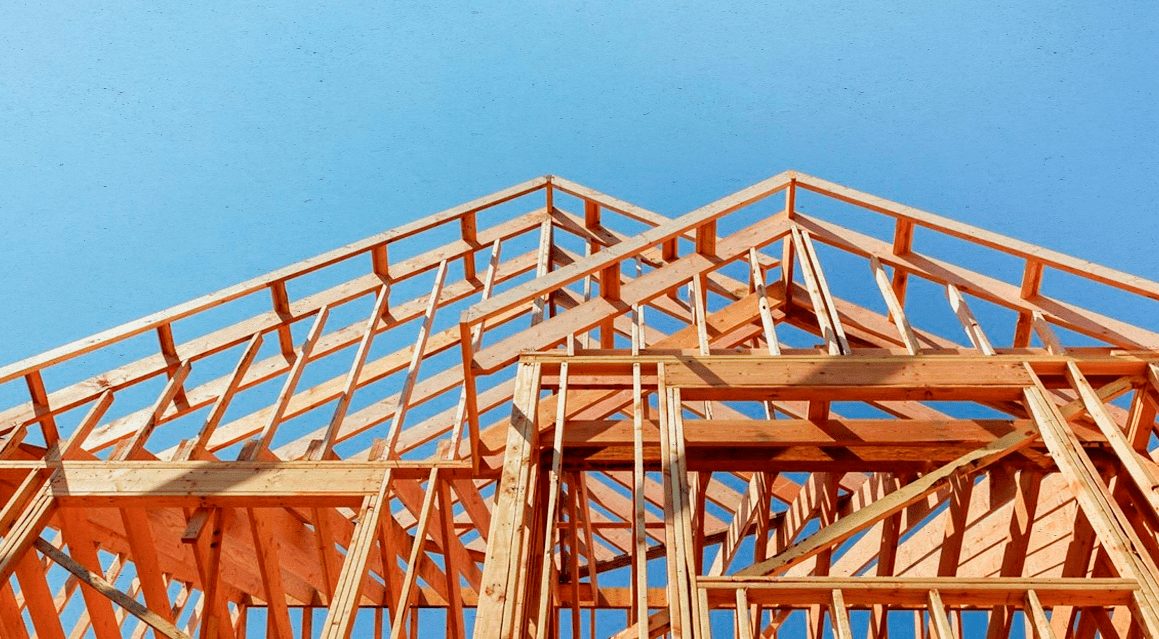Features > Property News & Insights > Housing Trends
Growth in residential construction costs slow to a 20-year low

KEY POINTS
- Residential construction costs are now growing at their slowest rate in 22 years
- However, the cost of building a typical Australian residential dwelling is still around 30% more expensive than it was in the pre-COVID period
- Slower growth in construction costs will affect overall inflation in Australia, as housing makes up a significant portion of the basket of goods and services that go into calculating the Consumer Price Index or CPI
- Analysts say that lower construction costs are unlikely to have much immediate impact on Australia’s chronic housing shortage
After years of high costs, labour shortages, insolvencies, and squeezed profit margins that have made many building projects unviable, there’s finally some good news for the residential construction sector.
A key index that tracks the rate of change of residential building costs in Australia has found that costs have stabilised and are now growing at their slowest annual rate in more than 22 years.
The details
CoreLogic’s Cordell Construction Cost Index (CCCI) shows national construction costs rose 0.5% over the June quarter of 2024, down from a 0.8% rise over the March quarter.
It means that over the year to the end of June, costs rose 2.6%, the smallest annual rise in the index in more than 22 years.
You have to go way back to the March quarter of 2002 to find lower annual cost growth (2.3%).
As a point of contrast, the Cordell Construction Index—which estimates the input costs of building a standard Australian three-bedroom, two-bathroom domestic dwelling—peaked at 11.9% in the 2022 calendar year.
The latest result is also well below the pre-COVID decade average of 4.0%.
It’s also below the current rate of inflation.
"The growth in costs has finally returned within normal margins,” says CoreLogic’s Research Director Tim Lawless.
“However, the price of construction is not falling and building or renovating remains almost 30% more expensive now than pre-COVID after an extended period of escalating costs.”
“It’s likely the easing in the growth of construction costs over the past six months, alongside higher established housing prices, will gradually help to repair builder profit margins and flow through to providing more confidence around pricing for new builds and renovations.”
Cost of materials
CoreLogic’s Construction Cost Estimation Manager John Bennett says his team found the overall slowdown in construction cost increases was due to less volatile prices for building materials.
Timber and metal products used for house frames, trusses, floors, cladding and roofing have actually seen price falls.
“Although some categories are registering a fall in price, there are multiple factors that make up the cost to build,” Mr Bennett says.
“Sustained issues across the supply chain, which plagued the industry throughout COVID have largely resolved, but costs for labour, for example, remain elevated and contribute significantly to any residential project.”
The housing outlook
However, don’t expect some magic turnaround that will see dwelling construction ramp up dramatically and home values and rents stop rising at a rate lower than inflation.
The fact is there is likely to be a housing shortage in Australia for some time to come.
Tim Lawless points to May’s increase in building approval figures of 5.5%.
While that was above expectations, construction activity remains stuck around decade lows, where it has been since early 2023.
"Even with May’s uptick in building approvals, we're still navigating the bottom of the approvals cycle,” he says.
“Any recovery remains tentative and unconvincing given thousands of approved projects aren’t coming to fruition for a variety of reasons, and building activity remains sluggish due to a substantial backlog of projects that are still progressing through the pipeline.”
The good news
The great news is that if you are planning to build a new home or investment property, more certainty about the cost of construction may mean builders are more likely to offer better value, as they are no longer dealing with wildly fluctuating input prices.
It’s also likely to provide more cashflow certainty for builders, meaning build completion times should—in theory—speed up, while fewer building firms are likely to go under, providing more competition on price and design for buyers.
The Cordell Construction Index numbers are also a win for the entire Australian economy.
Lower growth in construction costs will also flow through to lower overall inflation.
"Residential building costs are a key input for the housing component of the consumer price index," CoreLogic’s Tim Lawless says.
“Although rents remain a pain point for housing inflation, the slowdown in residential construction costs are a positive outcome for inflationary pressures."
Lower inflation, of course, means less chance of the Reserve Bank of Australia needing to raise the cash rate again.
And that’s good news for everyone.
Stay Up to Date
with the Latest Australian Property News, Insights & Education.




.png?width=292&height=292&name=Copy%20Link%20(1).png)
 SIGN UP FOR FREE NEWSLETTER
SIGN UP FOR FREE NEWSLETTER








.jpg?width=1920&height=1080&name=Warning%2c%20You%20Might%20Be%20Facing%20Higher%20Taxes%20Soon%20(1).jpg)





.png?width=1920&height=1080&name=Rate%20Drops%20Signal%20BIGGEST%20Property%20Boom%20in%20DECADES%20(1).png)

.jpg?width=1920&height=1080&name=Labor%20vs%20Liberal%20These%20Housing%20Policies%20Could%20Change%20the%20Property%20Market%20Forever%20(1).jpg)
.jpg?width=1920&height=1080&name=QLD%20Slashes%20Stamp%20Duty%20Big%20News%20for%20Investors%20%26%20Home%20Buyers%20(1).jpg)
.jpg?width=1920&height=1080&name=Trump%20Just%20Slapped%20Tariffs%20%E2%80%93%20Here%E2%80%99s%20What%20It%20Means%20for%20Australia%20(1).jpg)
.jpg?width=1920&height=1080&name=Federal%20Budget%202025%20More%20Debt%2c%20No%20Housing%20%E2%80%93%20Here%E2%80%99s%20What%20You%20Need%20to%20Know%20(1).jpg)
.jpg?width=1920&height=1080&name=Australias%20Housing%20Crisis%20is%20about%20to%20get%20MUCH%20Worse%20(New%20Data%20Warns).jpg)
%20(1).jpg?width=1920&height=1080&name=Australias%20RENTAL%20CRISIS%20Hits%20ROCK%20BOTTOM!%20(2025%20Update)%20(1).jpg)
%20(1).png?width=1920&height=1080&name=Is%20Adelaide%20Still%20a%20Good%20Property%20Investment%20(2025%20UPDATE)%20(1).png)
.jpg?width=1920&height=1080&name=RBA%20Shocks%20with%20Rate%20Cuts!%20What%E2%80%99s%20Next%20for%20Property%20Investors%20(1).jpg)
%20(1).jpg?width=1920&height=1080&name=I%20Predict%20The%20Feb%20Rate%20Cut%20(My%20Price%20Growth%20Prediction)%20(1).jpg)
.png?width=1920&height=1080&name=Why%20Property%20Prices%20Will%20Rise%20in%202025%20Market%20Predictions%20(1).png)
.jpg?width=1920&height=1080&name=Why%20Investors%20Are%20Choosing%20Apartments%20Over%20Houses%202%20(1).jpg)
.jpg?width=1920&height=1080&name=Why%20Rate%20Cuts%20Will%20Trigger%20A%20Property%20Boom%20(1).jpg)
.jpg?width=1920&height=1080&name=Retire%20On%202Million%20With%20One%20Property%20(Using%20SMSF).jpg)
.jpg?width=1920&height=1080&name=4%20Reasons%20Why%20You%20Should%20Invest%20in%20Melbourne%20Now%20(1).jpg)
%20(1).jpg?width=1920&height=1080&name=Old%20Property%20vs%20New%20Property%20(Facts%20and%20Figures%20Revealed)%20(1).jpg)
%20(1).jpg?width=1920&height=1080&name=Will%20The%20New%20QLD%20Govt%20Create%20a%20Property%20Boom%20or%20Bust%20(My%20Prediction)%20(1).jpg)
%20Scott%20Kuru%20(1).jpg?width=1920&height=1080&name=Inflation%20Hits%20Three-Year%20Low%20(Will%20RBA%20Cut%20Rates%20Soon)%20Scott%20Kuru%20(1).jpg)
.jpg?width=1920&height=1080&name=How%20to%20Buy%20Investment%20Property%20Through%20SMSF_%20The%20Ultimate%20Guide%20(1).jpg)
.jpg?width=1920&height=1080&name=Victoria%20Slashes%20Stamp%20Duty%20Melbourne%20Set%20to%20Boom%20Scott%20Kuru%20(1).jpg)
.png?width=1571&height=861&name=Are%20Foreign%20Buyers%20Really%20Driving%20Up%20Australian%20Property%20Prices%20(1).png)
.jpg?width=1920&height=1080&name=The%20Single%20Factor%20That%20Predicts%20Property%20Growth%20Regions%20(1).jpg)
%20Scott%20Kuru%20(1).jpg?width=1920&height=1080&name=My%20Prediction%20On%20Rates%20%26%20Negative%20Gearing%20(Market%20Crash)%20Scott%20Kuru%20(1).jpg)

-1.png?width=1920&height=1080&name=Major%20Banks%20Cut%20Rates%20Will%20RBA%20Follow%20Suit%20(Sept%20Rate%20Update)-1.png)
%20Scott%20Kuru-1.png?width=1920&height=1080&name=Rate%20Cut%20Coming%20What%20New%20Zealands%20Move%20Means%20for%20Australia%20(Sept%20Prediction)%20Scott%20Kuru-1.png)
%20(1).jpg?width=1920&height=1080&name=Buy%20when%20the%20interest%20rates%20are%20high!%20(Why%20you%20must%20buy%20now!)%20(1).jpg)
.jpg?width=1920&height=1080&name=Carms_Revised%20Taxes%20Due%20Aug%209%20YT%20Thumbnail02%20(1).jpg)
.jpg?width=1920&height=1080&name=Carms_Too%20Little%20Too%20Late%20Aug%207%20YT%20Thumbnail01%20(1).jpg)









.jpg?width=1920&height=1080&name=Carms_Rate%20Drop%20In%20July%20Jun%2010%20YT%20Thumbnail02%20(1).jpg)
.jpg?width=1920&height=1080&name=Carms_Own%20a%20Property%20V6%20Jun%205_YT%20Thumbnail%20(1).jpg)









.png?width=1920&height=1080&name=Artboard%201%20(3).png)






.jpg?width=1920&height=1080&name=YT%20thumbnail%20%20(1).jpg)

